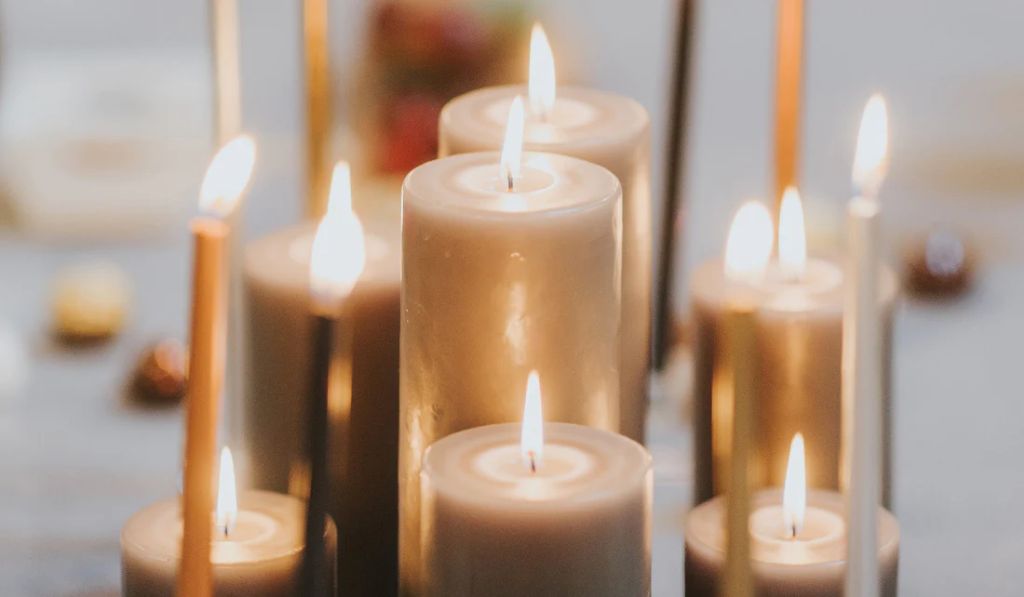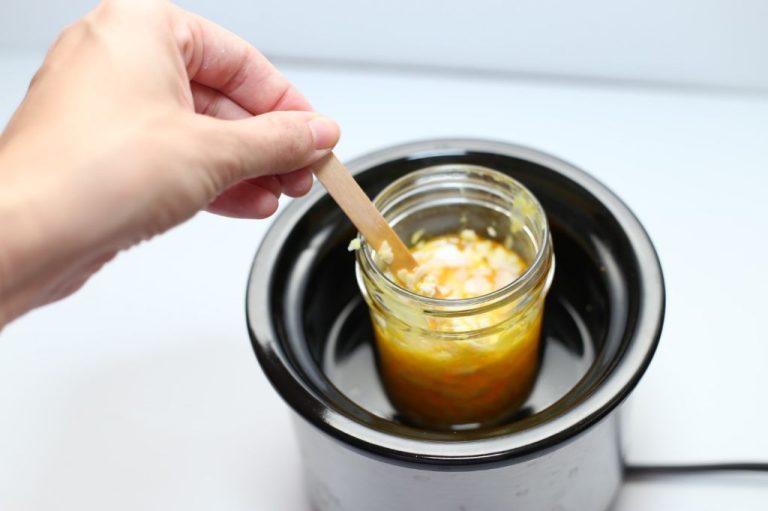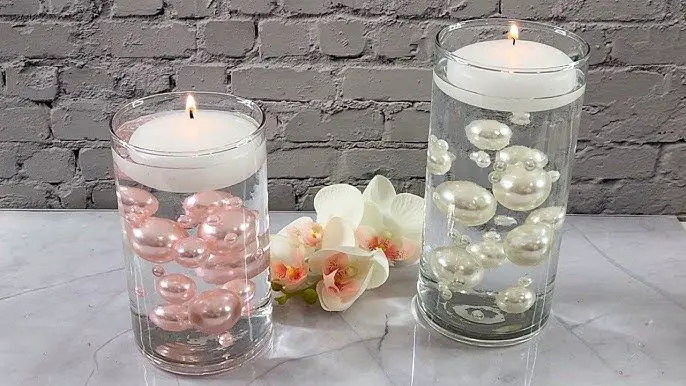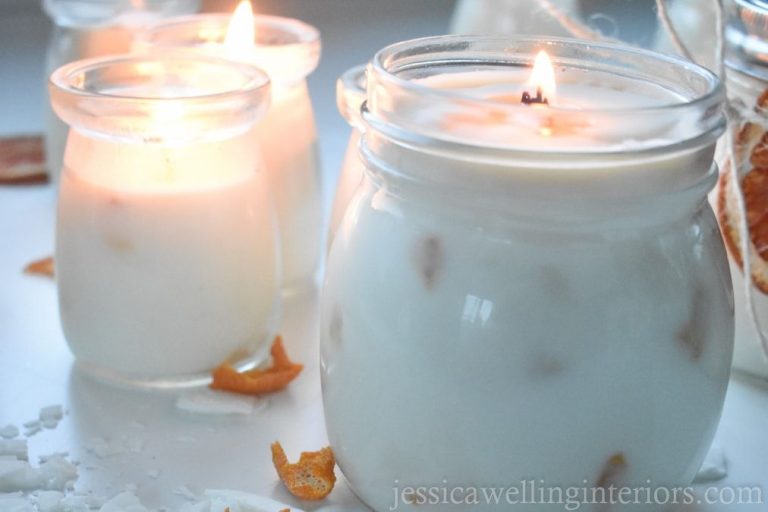What Type Of Candles Are The Cheapest?
Candles are a solid fuel, typically made from wax, that contains an embedded wick which is lit to provide light. The wax melts as the candle burns, surrounding the wick with liquid fuel. This capillary action draws the liquid wax up the wick, vaporizing it so the wax can then burn and give off light. Candles have been used for illumination, religious purposes, and aromatherapy for centuries.
There are many factors that contribute to the cost of a candle, including the type of wax, wick, shape and size, fragrance, quality, quantity purchased, and where it is purchased. In this article, we will explore the different characteristics of candles to determine what options tend to be the cheapest.
Wax Type
When it comes to choosing the cheapest wax for candle making, there are several options to consider including paraffin, soy, beeswax, and gel wax. Paraffin wax is often the most budget-friendly option. Made from petroleum, paraffin wax can be purchased from most craft stores in bulk quantities for very affordable prices. According to candlewic.com, a 10 lb slab of paraffin wax costs around $12 (https://candlewic.com/c/candle-making/wax/). Soy wax, made from soybeans, is another economical choice though generally costs slightly more than paraffin. At Fillmore Container, a case of 55 lb soy wax flakes is around $60 (https://www.fillmorecontainer.com/candle-supplies/wax.html). Beeswax, which comes from honeycombs, is a more expensive natural wax, priced at $8-15 per lb on average. Gel wax, a mineral oil-based plastic polymer, falls on the higher end of the spectrum as well. When strictly comparing cost, paraffin wax emerges as the cheapest candle wax, providing hobbyists and small businesses the most budget-friendly option. Soy wax can be a good middle ground alternative, while natural waxes like beeswax carry premium pricing.
Wick Type
The wick is a key component that impacts both the performance and price of candles. When it comes to cheap candles, the wick material is an area where costs can be cut. The most common wick materials are cotton, wood, and paper.
Cotton wicks are the most popular choice as they offer excellent capillary action to draw wax up while burning evenly and cleanly. However, cotton is more expensive than other materials. Wooden wicks made from wood flakes are cheaper but may crackle and spark more when burning. Paper wicks are the most affordable option but tend to bend and drown in wax pools, resulting in poor performance.
For the best balance of price and performance, many budget-friendly candle makers opt for a thin cotton or cotton-paper blend wick. While these may require more frequent trimming of the wick during burning, they provide reliable results at lower material costs compared to premium braided cotton wicks.
Shape and Size
The shape and size of a candle can significantly impact its cost per burn hour. Smaller candles like votives and tealights tend to be the most affordable options when looking at cost efficiency. According to Amazon, a box of 100 votive or tealight candles can cost as little as $10-15, providing up to 100 hours of burn time. With pillars and larger container candles, you get fewer burn hours per dollar spent. An 8oz pillar candle may provide 20-30 hours of burn time and cost $5-10 each. Large container candles over 16oz could cost $15-30 and only burn for 60-80 hours.
The reason smaller candles are more cost effective per burn hour is due to the increased amount of wax per ounce. A tealight has a higher wax to container size ratio compared to a large jar candle, allowing more wax to be burned per dollar spent. Additionally, votives and tealights are produced in high volumes allowing for cheaper production costs that lead to lower retail pricing. So when looking for the cheapest price per hour, opting for smaller votives, tealights and pillars is the best option.

Fragrance
The type and amount of fragrance oil used in candles can significantly impact the overall cost. Fragrance oils are blended synthetic scents designed specifically for candle making, while essential oils are from natural sources and more expensive. Unscented candles avoid fragrance costs altogether.
Fragrance oils are the most budget-friendly option. They can be purchased in bulk quantities at low cost from suppliers like Bulk Apothecary and Fillmore Container. A high quality fragrance oil suitable for candles can cost between $1-$3 per ounce when buying in bulk (Bulk Apothecary). This makes it possible to scent candles very economically.
In comparison, essential oils derived from plants are much more costly, ranging from $5-$200 per ounce. While they provide a pure, natural scent, the quantity needed to scent candles makes them impractical for inexpensive candle production. Unscented candles avoid any fragrance costs, but customers commonly expect and desire a scented candle.
In summary, well-formulated fragrance oils balance affordability and performance. They allow candle makers to incorporate compelling scents into their budget-priced candle lines. Using minimal quantities of inexpensive fragrance is key to keeping candle costs down.
Quality
When looking for cheap candles, it’s important to consider quality as well as price. The absolute cheapest candles often have poor scent throw, uneven burn, and shorter burn times. It’s better to spend a little more for a higher quality candle that will provide a better experience.
Look at the ingredients when comparing candle quality. Many cheap candles use paraffin wax, which doesn’t retain scent as well. Higher quality candles use soy, coconut, or bee’s wax. These natural waxes evenly distribute fragrance and provide cleaner burning.
Also consider the wick quality. Low quality wicks cause candles to burn unevenly, tunnel, or smoke. Higher quality wicks made from natural materials like paper or cotton ensure an even burn.
When weighing cost, calculate price against expected burn time. A candle that costs $10 but only burns for 10 hours works out to $1 per hour. A $20 candle that burns for 40 hours is only 50 cents per hour. The higher initial cost candle is actually the better value.
Reviews from other buyers can indicate issues with scent throw, burn quality, and longevity. Opt for candles with high ratings to increase satisfaction.
While absolute rock bottom prices may be tempting, spending a couple dollars more can provide a much better overall candle experience. Quality ingredients, complex fragrances, and reliable performance ensure greater enjoyment and value over time.
Quantity
Buying candles in bulk generally brings down the per unit price. This is because when purchasing large quantities, manufacturers and wholesalers can offer discounts for buying more. Some key things to consider with bulk candle pricing:
According to Bulk Unscented Candles | TheCandleDepot.com, buying a case of candles (typically 24-36 candles per case) provides the best bulk pricing discounts compared to buying individual candles or smaller sets.
The more candles you buy, the lower the per unit price will be. For example, Buy Bulk Candles at Discounted Prices offers tiered pricing where 96 candles ranges from $1.99 – $2.49 per candle versus 240 candles from $1.49 – $1.99 per candle.
Opting for unscented candles in basic tin containers also lowers the bulk pricing. As noted by Wholesale Bulk Candles, plain tins can be 20-30% cheaper than more decorative jars and scented candles may cost $1-3 more per candle when buying in bulk.
Overall, buying candles by the case and focusing on simpler, unscented styles will provide the most affordable bulk pricing.
Sales
Waiting for sales events like holidays or clearance sales can save substantially on the cost of candles. Many major candle retailers like Yankee Candle and Colonial Candle frequently have sales for various holidays or seasons where candles are discounted 20-50% or more.
Shopping clearance sections is another great way to find steep discounts. Retailers will often move candles that didn’t sell well or are being discontinued to these sections and mark them 50-75% off.
You can also find great candle deals by signing up for retailer newsletters and email lists. They will notify you about upcoming sales events and exclusive online promo codes for discounts on candles.
In general, aiming to buy candles during major sale holidays like Memorial Day, July 4th, Labor Day, and Christmas is a good strategy to pay the lowest possible prices.
DIY vs Store Bought
Many people wonder if it’s cheaper to make candles at home versus buying them pre-made from a store. According to experts on candle making forums and blogs, it is often significantly cheaper to make your own candles rather than purchasing store-bought options.
For example, according to one Reddit thread on r/candlemaking, the general rule of thumb is that candles cost 2x the wholesale price to produce, and retail for 3x-4x the wholesale cost [1]. This means store-bought candles have high markups compared to materials. Making them yourself removes these retail and wholesale margins.
One article compares a 22oz candle from Yankee Candle costing $30 versus making a similar sized candle at home for around $5-10 in materials. The homemade candle ingredients come out 5-6x cheaper [2]. This drastic difference demonstrates the potential cost savings of DIY candles.
In summary, by making candles yourself you skip the wholesale and retail markups added to store-bought options. This allows you to produce candles for a fraction of the price, making homemade generally the most budget-friendly option.
Conclusion
When looking for the cheapest candles, there are a few key factors to consider. The main elements that influence cost are the wax, wick, shape/size, fragrance, and quality.
The most budget-friendly wax options are paraffin, soy, and beeswax blends. Paraffin is the least expensive, while 100% soy or beeswax will be pricier. For wicks, coreless cotton wicks are cheaper than wood or zinc core wicks.
Smaller pillar or votive candles tend to be more affordable than larger jars or pillars. Unscented or lightly scented candles are cheaper than those with complex fragrance oils. In terms of quality, lower end candles may have more issues with scent throw or inconsistent burning compared to premium options.
Buying in bulk quantities can significantly lower the per unit price as well. Making DIY candles with basic supplies is cheaper than buying pre-made candles from most stores.
So in summary, basic paraffin or paraffin-blend pillars with cotton wicks, minimal fragrance, and bought in bulk quantities will provide the cheapest candle options overall.




